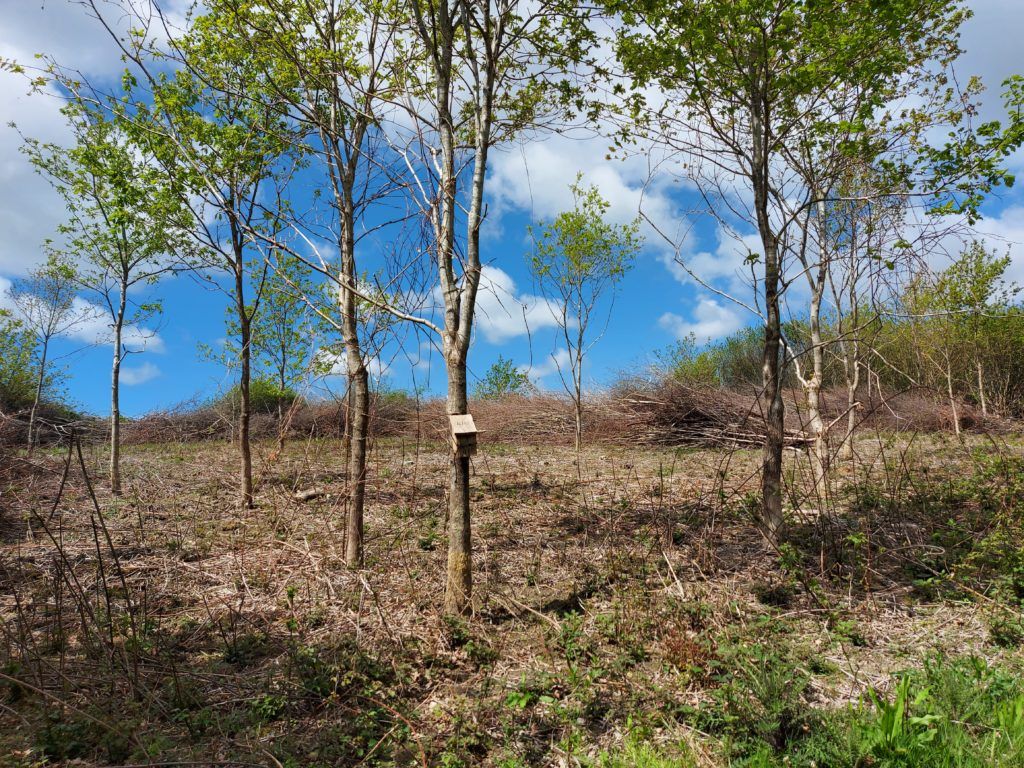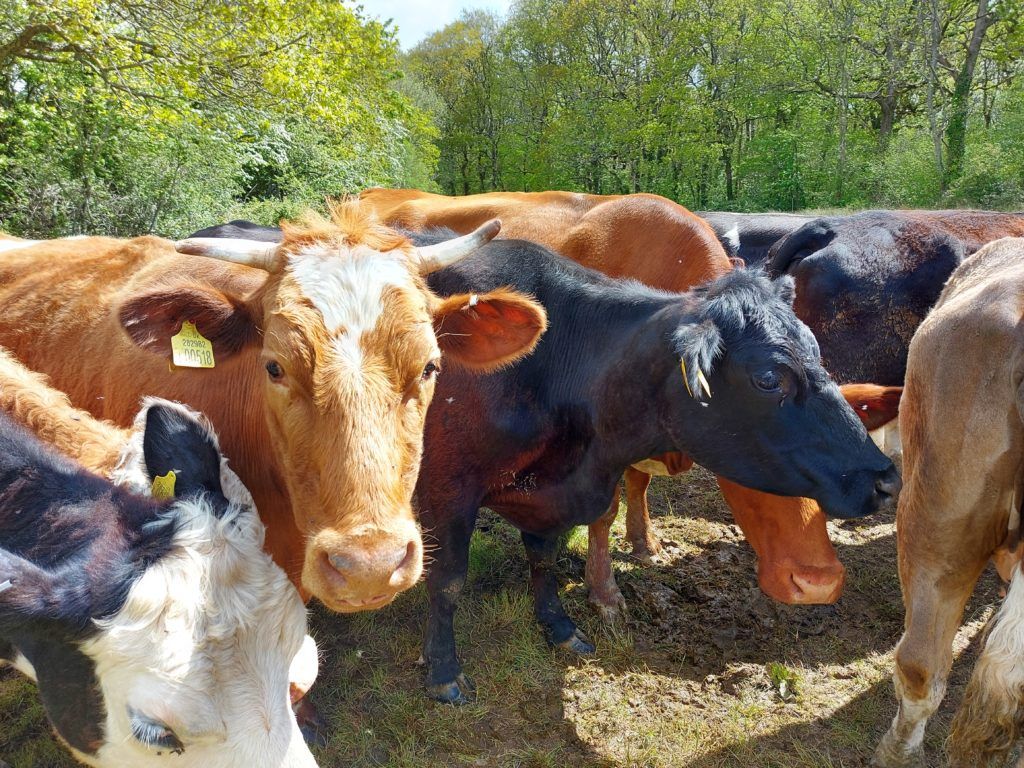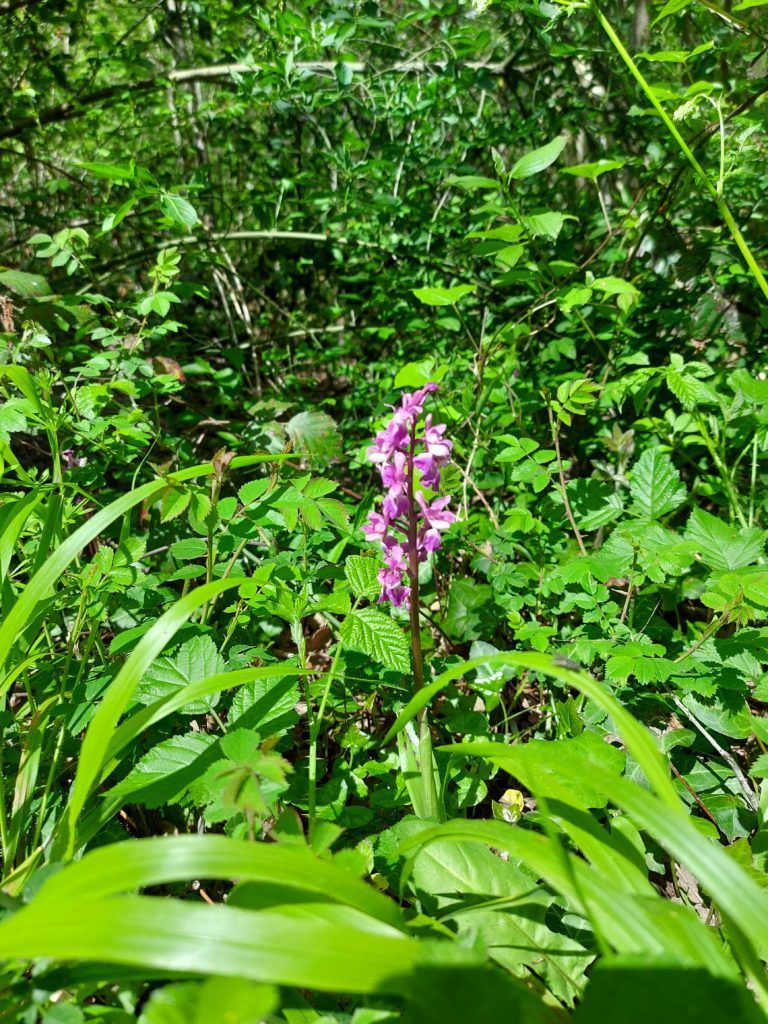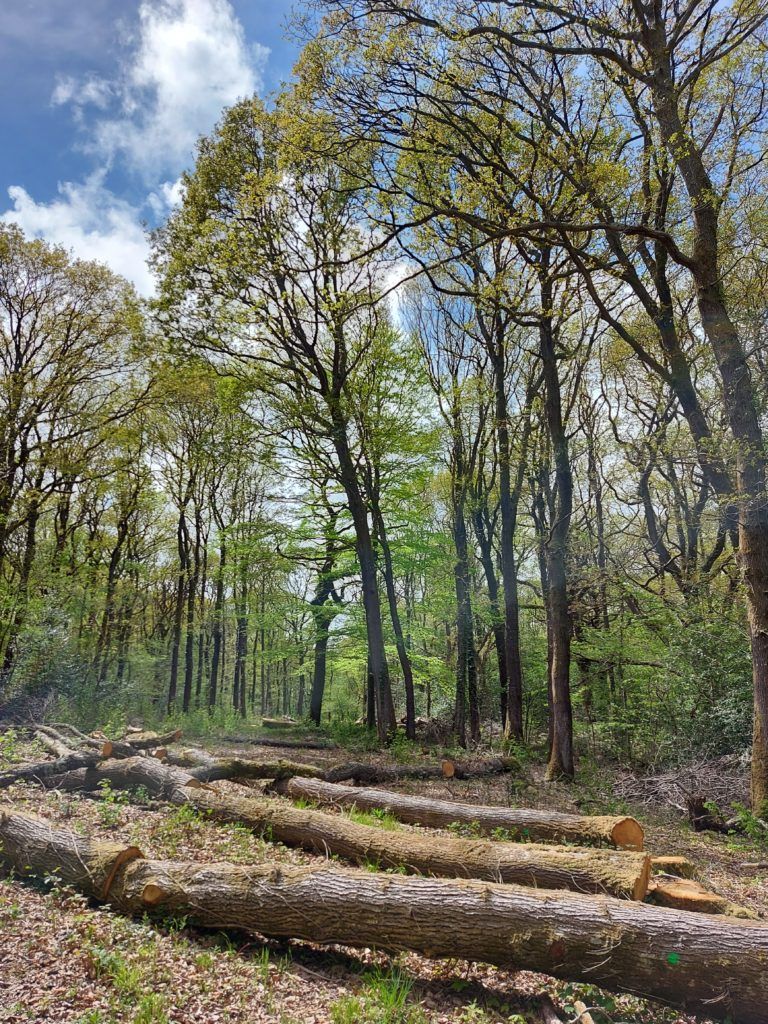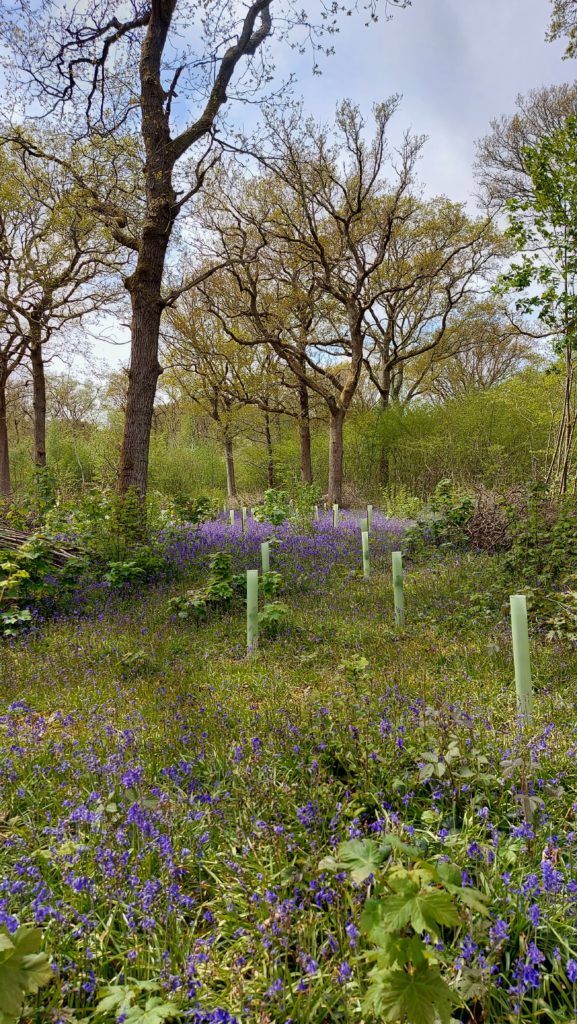Our nature reserve on the Isle of Wight, Briddlesford Woods, is an ancient woodland which has a rich array of woodland flora and rare invertebrates, but is best known for its unique assemblage of mammals. It provides a home for red squirrels, 9 bat species and hazel dormice. This means we have to balance the woodland management to take into account the many species it supports.
Rare sightings and coppicing
Earlier this year I visited Briddlesford for the day to check up on all the wonderful work that had been done over winter. Although much of the planning for Briddlesford can be done remotely, it is so much better to go in person, to discuss the issues on the ground and have an opportunity to see the beautiful woodland too.
The reserve was looking fantastic, we saw lots of orchids and there were so many birds singing. We also spotted several butterflies including a grizzled skipper – a priority species and in decline.
In our largest copse which is has plenty of old oak trees, the new hazel shoots were thriving, and the bluebells were at their peak. Our skilled contractors had coppiced 3 areas of hazel and planted 275 new hazel trees in the gaps. Coppicing means cutting trees to the ground and allowing them to regrow with multiple stems. We divide up the woodland and cut each area (known as a coupe) on a rotation of around 15-20 years. We leave it this long to allow the trees to reach peak hazel nut production for dormice and red squirrels to eat. Coppicing prolongs the life of the hazel, periodically opens up areas of the woodland floor and lets other things like bramble and honeysuckle grow. Thick bramble is great for dormice to make nests in, the fruit provides a great source of food in autumn, and dormice use honeysuckle to weave their unique nests. Over time the old hazel trees can die and it is important we replace them so that the understory is thick, and dormice can move about easily between the trees.
Nature’s highways
Rides (open paths through the woods) have also been widened to let more light in and encourage flowers to grow which in turn encourages pollinating insects particularly butterflies. Opening it up has also meant that there were hundreds of oak seedlings pushing their way up through the leaf litter.
One small area of young woodland (planted about 18 years ago) called Ed’s Wood, which is very good for dormice, has had its first cut. This will be kept cut on a rotation to keep the understory thick for dormice whilst other areas will grow to be mature woodland.
The hedge we layed at our last volunteer weekend was looking very healthy and will soon be a flourishing highway for dormice to travel along, feed and nest in.
I will be going back to visit again soon to check up on our dormice at one of our nest box checks and to organise the coming autumn and winter work.
Written by Laura Bower, PTES Conservation Officer.
Find out more about Briddlesford Woods:

